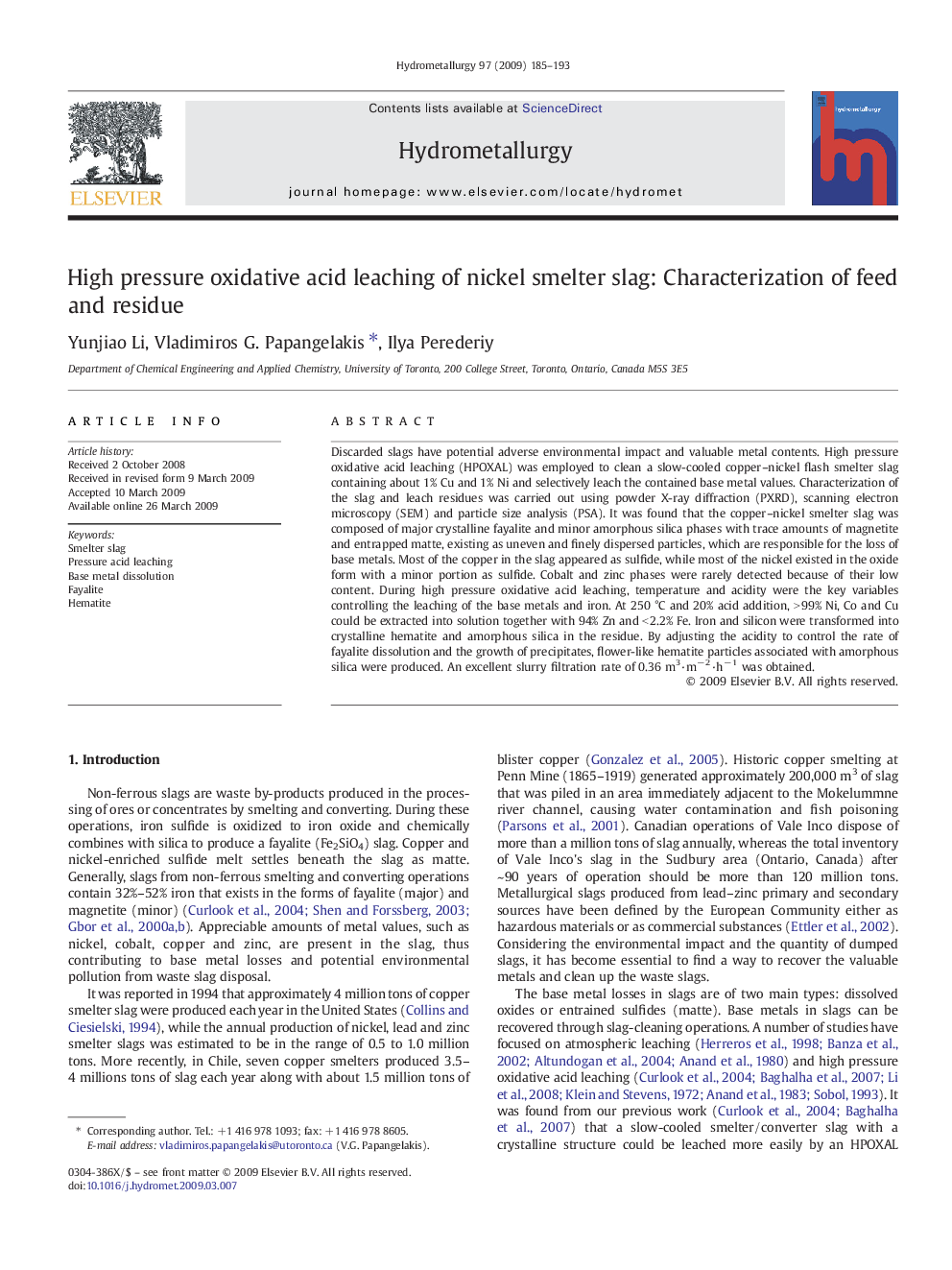| Article ID | Journal | Published Year | Pages | File Type |
|---|---|---|---|---|
| 212959 | Hydrometallurgy | 2009 | 9 Pages |
Discarded slags have potential adverse environmental impact and valuable metal contents. High pressure oxidative acid leaching (HPOXAL) was employed to clean a slow-cooled copper–nickel flash smelter slag containing about 1% Cu and 1% Ni and selectively leach the contained base metal values. Characterization of the slag and leach residues was carried out using powder X-ray diffraction (PXRD), scanning electron microscopy (SEM) and particle size analysis (PSA). It was found that the copper–nickel smelter slag was composed of major crystalline fayalite and minor amorphous silica phases with trace amounts of magnetite and entrapped matte, existing as uneven and finely dispersed particles, which are responsible for the loss of base metals. Most of the copper in the slag appeared as sulfide, while most of the nickel existed in the oxide form with a minor portion as sulfide. Cobalt and zinc phases were rarely detected because of their low content. During high pressure oxidative acid leaching, temperature and acidity were the key variables controlling the leaching of the base metals and iron. At 250 °C and 20% acid addition, > 99% Ni, Co and Cu could be extracted into solution together with 94% Zn and < 2.2% Fe. Iron and silicon were transformed into crystalline hematite and amorphous silica in the residue. By adjusting the acidity to control the rate of fayalite dissolution and the growth of precipitates, flower-like hematite particles associated with amorphous silica were produced. An excellent slurry filtration rate of 0.36 m3·m− 2·h− 1 was obtained.
